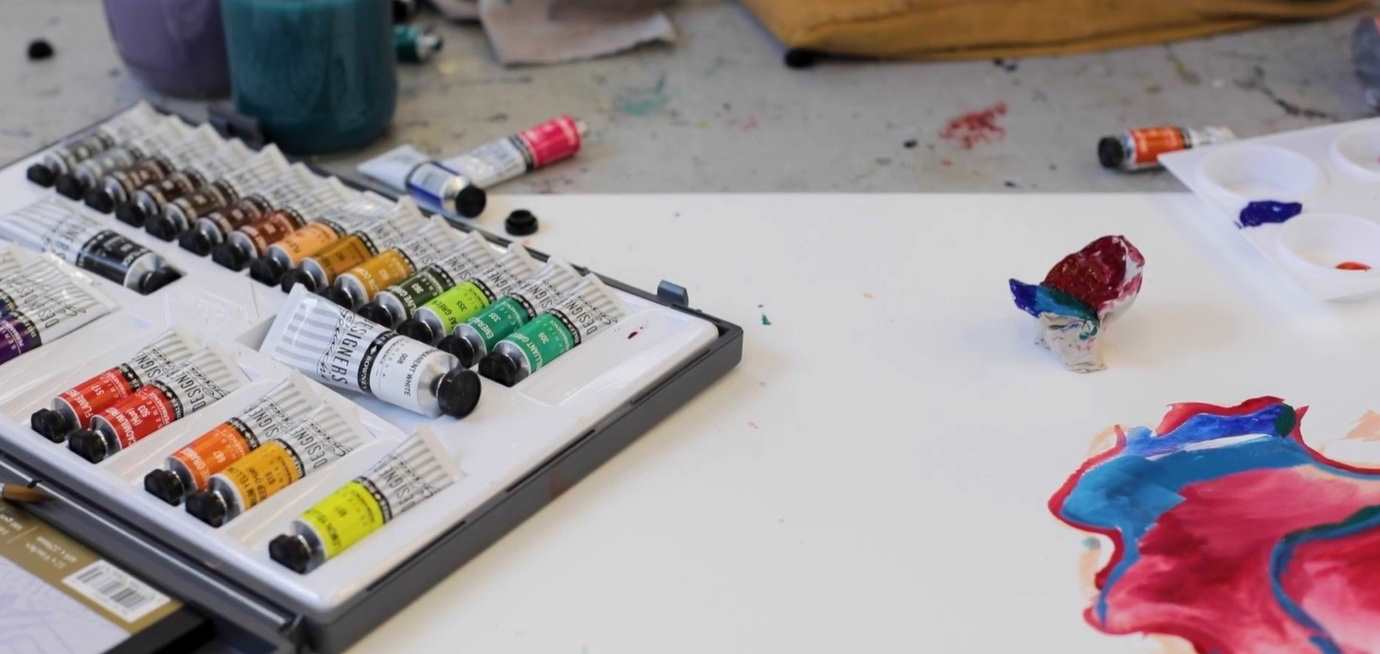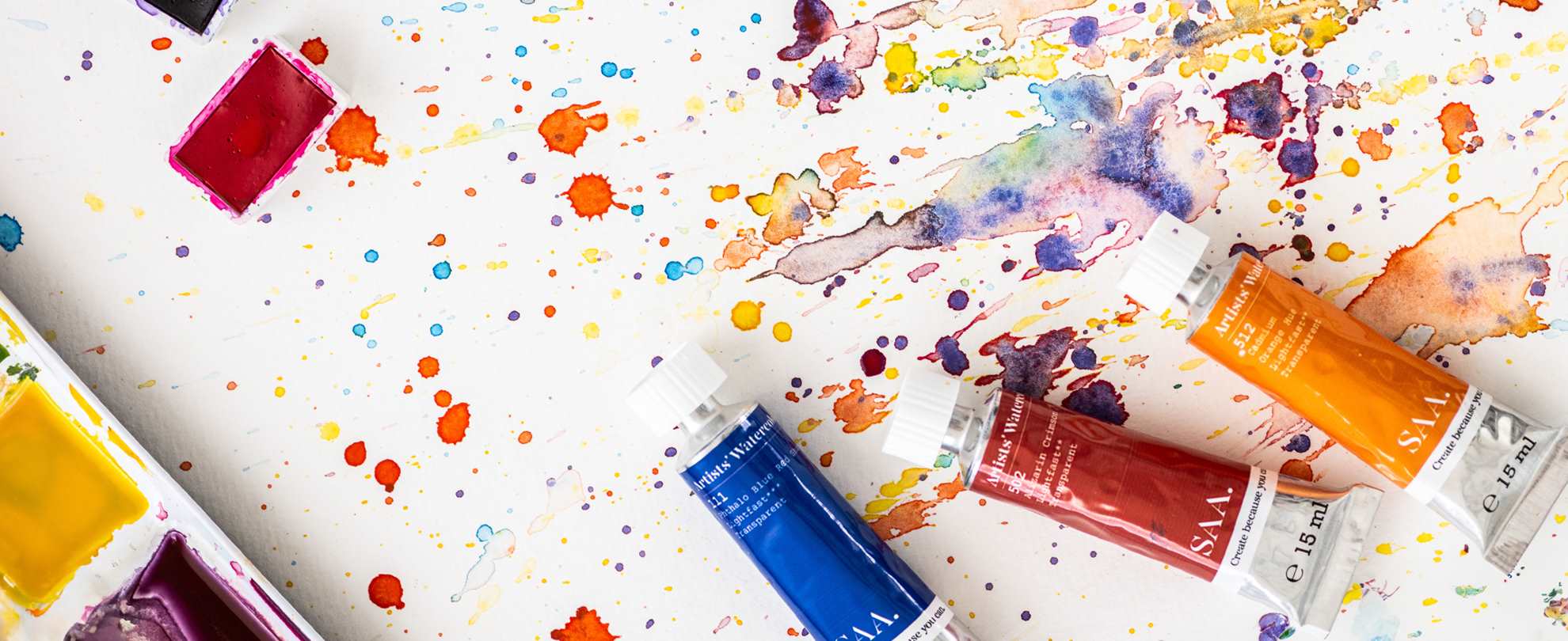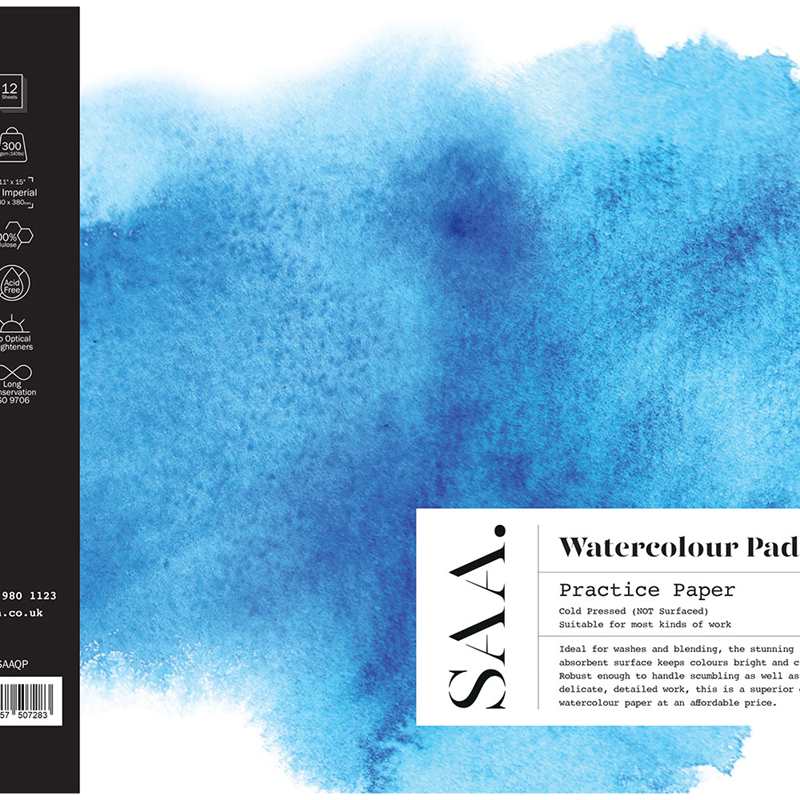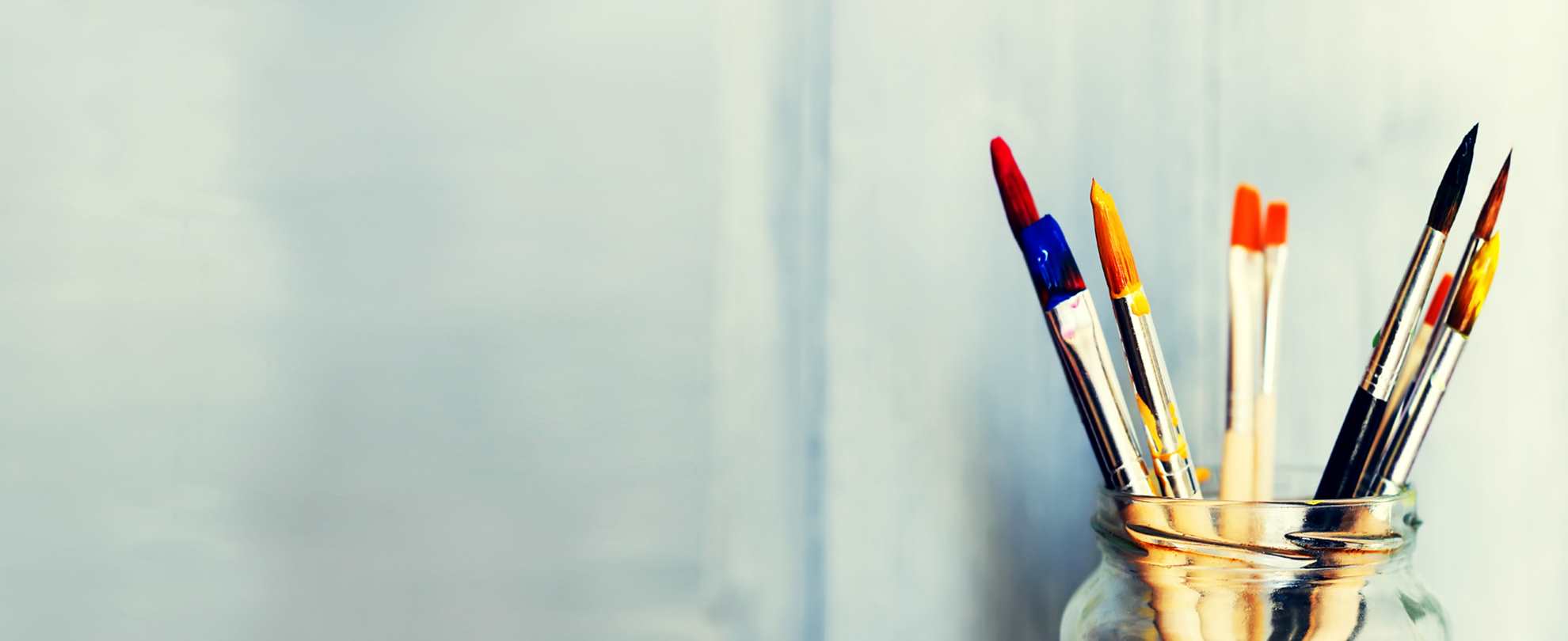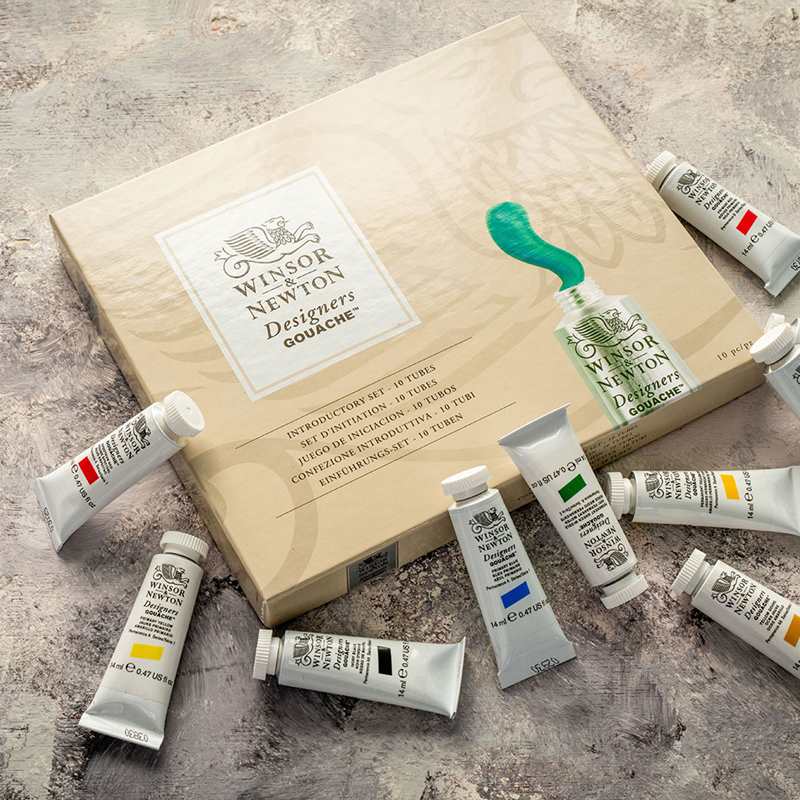

History of Gouache
The term Gouache (pronounced guwash) has been used to describe both a product and a technique. Gouache is a French word adapted from the Italian word aguazzo (meaning mud) used around the 16th century to refer to an opaque painting style.
As far back as the fifteenth century, artists were using water-based paint, a binder usually gum Arabic and adding a white pigment (like chalk) to make these opaque, sometimes called body colour. This was then used for illuminating manuscripts.
As a product Gouache was developed around the 1930s when Winsor & Newton initiated by the demand for commercial artists like designers and illustrators for graphic and design work. Designer Gouache as it was called has higher levels of pigment which aid the covering power. Gouache was used to create animation in most 20th century to create opaque backgrounds.
It can be used by fine artists as an opaque watercolour or in combination with artists' watercolours. But it is thicker and more flexible than watercolour as extra glycerine is usually used in its binder.
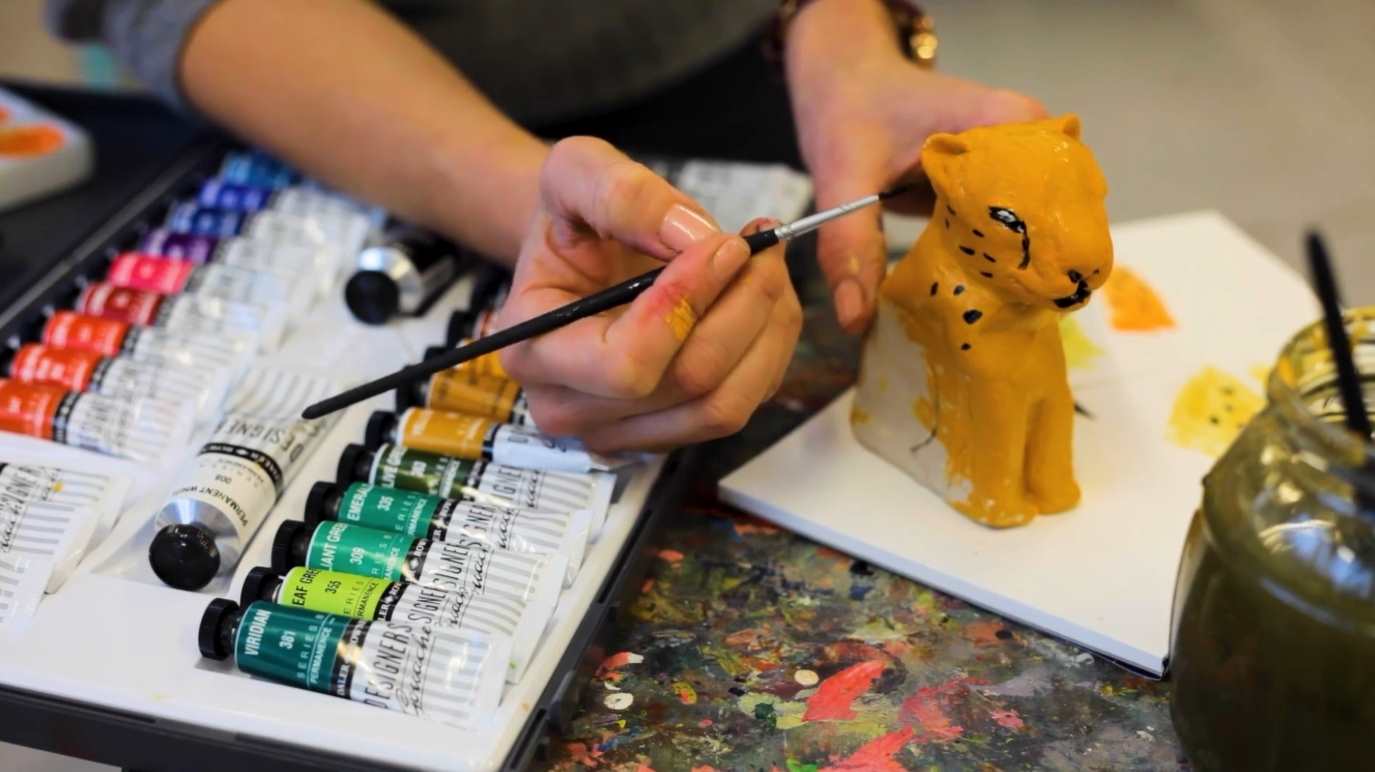

Characteristics of Gouache
Gouache is much more opaque, fluid and covers well – once it dries it has a matt smooth finish which doesn't make it ideal for varnishing. It is finely ground to produce colours with easy flow, exceptional tinting strength, quick-drying, brilliance of colour and gives a Matt finish.
Advantages
- Opaque
- Quick-drying
- Gives a flat and even colour
- Thick paint can be built up over thin layers
- Can be combined with other media
- Useful for painting light colours over dark tones
- Can be used on coloured paper and card and watercolour paper
- Rewettable like watercolour once dry
Gouache is nearly always sold in tubes as there is some concern the paint will evaporate in jars. It has an average shelf life of 3-5 years. Gouache is designed to be applied thickly instead of thin washes but should not be applied in too many layers to avoid cracking of paint. It forms a thicker layer of paint on the paper surface and does not allow the paper to show through and is a popular addition to watercolour paintings to create highlights.
You will notice that some colours in the Designer gouache ranges are less permanent, and their lightfast ratings show a low rating of B or C. The reason for this is that many commercial works only have to last until they are photographed, the artists are not concerned about the permanence of the paint. Some unique colours were created that have a very low permanence. On Winsor & Newton paints AA means very permanent, B a little less permanent etc.
Check the lightfastness/permanence of the colours you are using as there are still some colours in Gouache ranges that are not A or AA rated and will tend to fade. Although there are many colours that are suitable to the fine art application and have good archival properties.


Gouache Techniques
Watercolour & Gouache: As gouache is a water based medium, it can be used the same way as traditional watercolour depending on the amount of water that is added. – altering the levels of transparency. As with watercolour, Gouache will tend to dry to a different value than they appear when wet. (darker colours will dry lighter and lighter colours will dry darker.)
Gouache can be used in thin transparent washes as with watercolours. It can also be used for small and detailed paintings or as highlights in watercolours. Gouache can be applied as solid colours and can be over painted in layers. The paint dries to a matte finish but will not be waterproof like acrylics. You can mix white Gouache with transparent watercolour to make it opaque. It is easier to use light over dark. Gouache is a permanent medium but as with all media some pigments have a greater degree of permanence than others – which are indicated on the manufacturer's lists.
Oil Paint & Gouache: Gouache can be used in an oil painting technique without the smell of solvent and can be applied in thick layers as with oils.
Acrylic Paint & Gouache: Gouache can also be applied like acrylic straight from the tube and using a palette knife. If applied thinly, the paint dries quickly (like acrylics), and is very good for covering previously painted layers as it does not allow any of the paper to show through the paint (unless mixed with lots of water).
Its highly concentrated pigment is similar to traditional gouache, but it is mixed with an acrylic-based binder, unlike traditional gouache that is tempered with gum Arabic. It is water-soluble when wet and dries to a matte, opaque and water-resistant surface when dry. It dries slightly slower than traditional acrylics so the reworking time is slightly extended
Mixed Media & Gouache: Gouache can be used in mixed media such as pastels, watercolours, inks, and Acrylics. Some care must be taken when mixing with acrylics as some gouache colours can adversely react with acrylics.
E.g., pinks and violets in DG have a tendency to change colour in combination with acrylic. Some DG is sensitive to alkali and can produce lumpy mixes so combination tests should be carried out before applications.
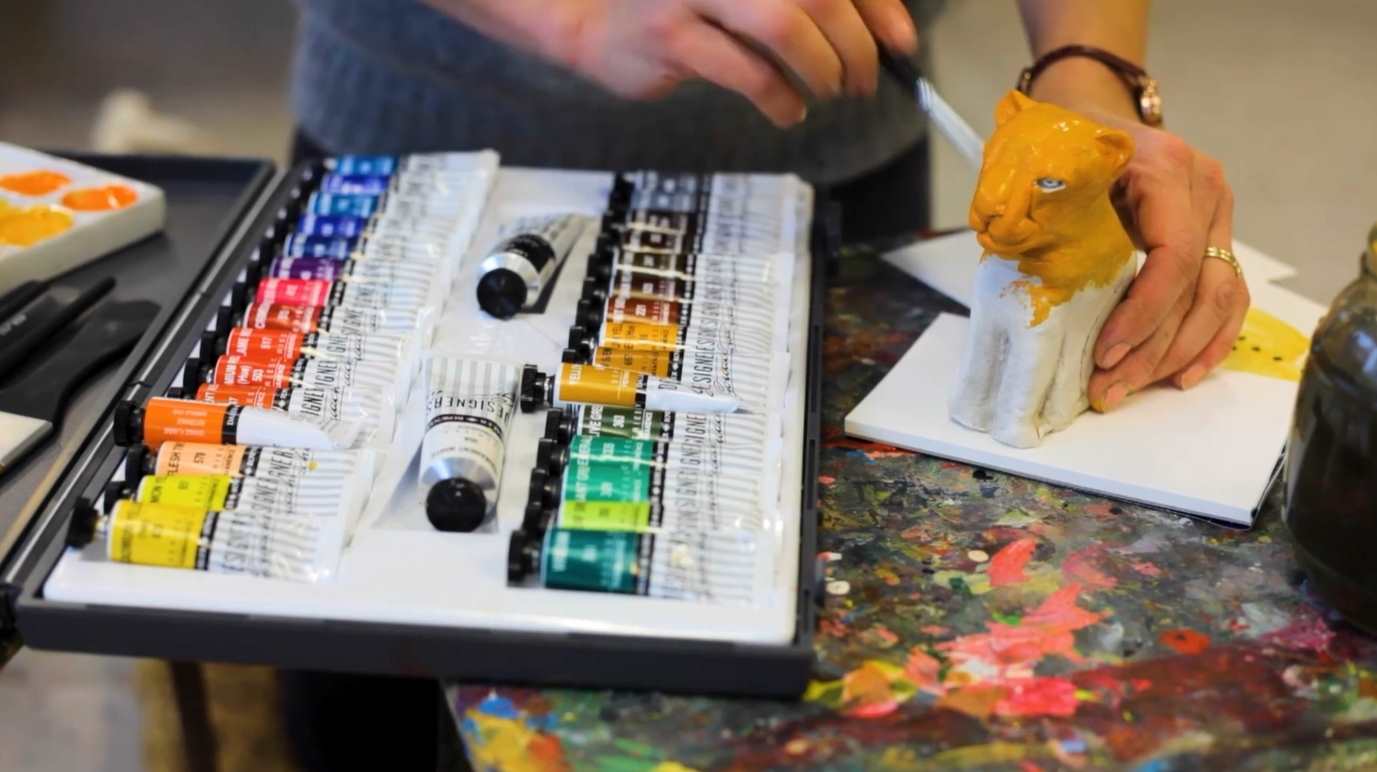
Gouache Tips
Cracking can be one of the biggest issues when working with Gouache. It can occur due to one of two reasons:
1. If insufficient water is used to dilute the colour, the thicker film may crack as the paint dries on the paper (please note that the amount of water needed will differ with each colour.)
2. If painting in layers, the subsequent ones may show cracking if the under layer absorbs binder from the wet colour.

Surfaces
Gouache can be applied to most surfaces because it is an opaque medium, but one of the most popularly used surfaces are either white or tinted watercolour paper. Some artists also use coloured pastel paper, mount board or cardboard paper.
You can paint with gouache on paper, but it is recommended that you use a heavy paper instead of a light paper because it is a water based medium. You should always test the surface you want to work on.
